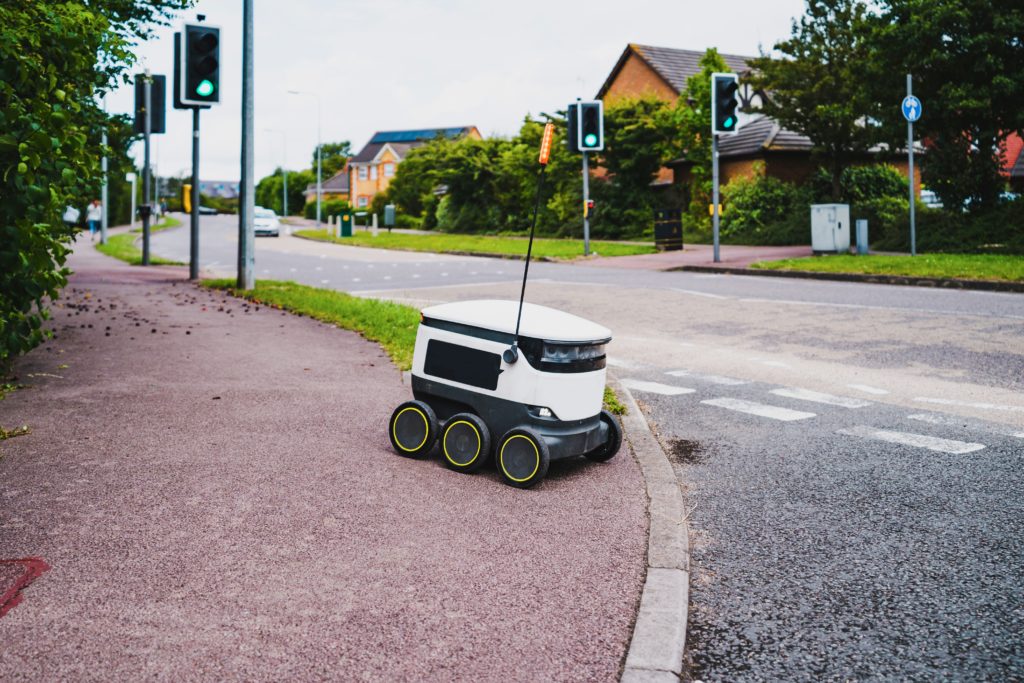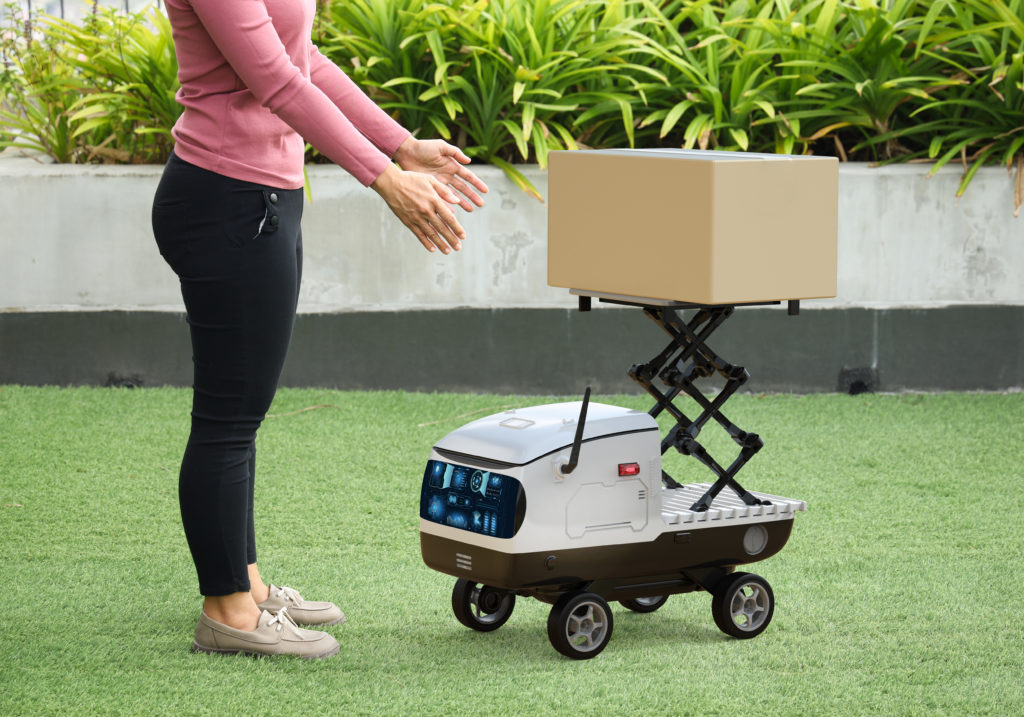The sci-fi fantasy of robots taking over human jobs and tasks isn’t only something you see in the movies anymore. Now, you can order food, packages, and more to be delivered at your front door by cute delivery robots on wheels.
As no-contact delivery surged in popularity during the Covid-19 pandemic, so did the demand for delivery robots. When people were quarantined inside their homes and unable to do their shopping in-person, robots could deliver items to minimize human contact. Even after global lockdowns, delivery robots have remained an important part of society. Just like other forms of smart technology, delivery robots can make our lives easier, giving us more time to spend with our loved ones.
What are delivery robots?
Delivery robots are automated robots that bring your delivery straight to your door instead of your typical postal carrier or FedEx truck. These robots are basically a delivery container on wheels, sent from your vendor directly to your front door.
So how do delivery robots work? After you make a purchase through the app, the vendor will place your order into the delivery robot’s central container. Using cameras, sensors, and GPS navigation, the robot finds its way to your home or other drop-off location. The robots travel at about 4 miles per hour, so delivery can take up to thirty minutes. You can then use the app to unlock the secure compartment, which ensures your items won’t be stolen.
What can you get delivered from a delivery robot?

Technically, delivery robots can deliver anything you can order from available vendors, as long as it fits inside the compartment. This includes:
- Food and drink
- Online farmer’s markets
- Books, games, and toys
- Mail and packages
- Pharmacy orders
- Diapers and formula
- Pet food and pet medication
However, delivery robots have much more potential than just delivering takeout orders. Along with traveling larger distances within neighborhoods, delivery robots can also transport items within buildings, traveling through hallways and up and down elevators. Places like restaurants, hotels, and hospitals can use delivery robots to quickly and easily deliver items to customers and patients.
This can look like placing your dirty dishes inside a delivery robot after finishing your meal. Or asking the front desk of your hotel for more towels and shampoo, delivered by a robot. Hospitals can use robots to transport test materials, take away soiled laundry, and deliver food to patients’ rooms.
Starship Technologies robotic delivery service

In 2021, Starship Technologies launched the first robotic delivery service in North Carolina. They partnered with North Carolina Agricultural and Technical State University to roll out the university’s food delivery service via delivery robots. Students, faculty, and staff can use the Starship Food Delivery app to order food from on-campus restaurants. Within minutes, a delivery robot will deliver their food and drinks. This service is also free of delivery fees for two years and works with student meal plans.
Other universities across the country are also partnering with Starship Technologies to launch robot delivery systems. In 2021, Starship announced services at twenty different campuses in fifteen different states, including the University of Illinois Chicago, the University of Kentucky, and the University of Nevada, Reno. Starship’s delivery robots continue to provide meal deliveries with a global fleet of over 1,000 robots.
How sustainable are delivery robots?
Are delivery robots sustainable? Starship Technologies delivery robots are zero-emission and use artificial intelligence and sensors to travel on sidewalks and navigate around obstacles. Delivery robots use significantly less power than cars or delivery trucks. Instead of using gas, they run on electricity, which drastically reduces carbon emissions. Their AI technology can also map out the most efficient routes. Sustainability Times claims delivery robots can compete with delivery vans by making numerous small trips around communities rather than one big trip.
Are delivery robots accessible?

Delivery robots aren’t monopolized by giants such as Walmart and Amazon. In fact, pharmacies, hospitals, and small businesses can all use robots to quickly deliver important products to customers. Those who are unable to leave their homes to shop will have shorter wait times for the items they need. Starship Technologies delivery robots can cross streets, climb curbs, and can operate at night and in the rain and snow. No matter the time of day or weather conditions, delivery robots can navigate to your location.
Are delivery robots the future?
With the demand for faster delivery and automated technology increasing, so does the demand for delivery robots. The worldwide market for delivery robots was estimated to be $24.30 million in 2019. According to Verified Market Research, annual sales are projected to reach $236.59 million by 2027. This means that if you haven’t already seen or used a deliver robot, you probably will in the next five years.
Technology is changing the future
As a whole, technological innovations have the potential to make the world a better, more sustainable and accessible place. How has technology changed your life for the better? Leave us a comment below with your thoughts.
Emily Richey
Emily Richey is the Content Manager for the CenturyLink and Quantum Fiber blogs. A recent graduate of Pace University NYC, she’s an avid reader and writer. She spends most of her free time in bookstores and cafes, seeking the perfect cup of coffee.
